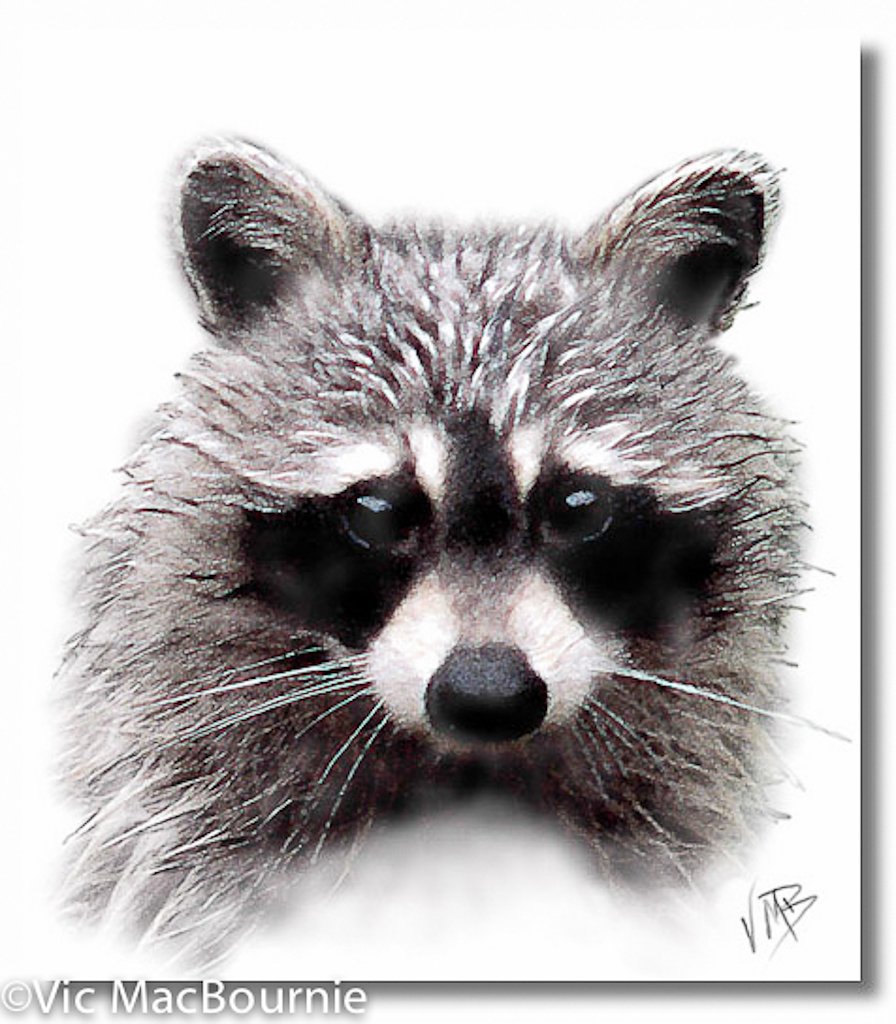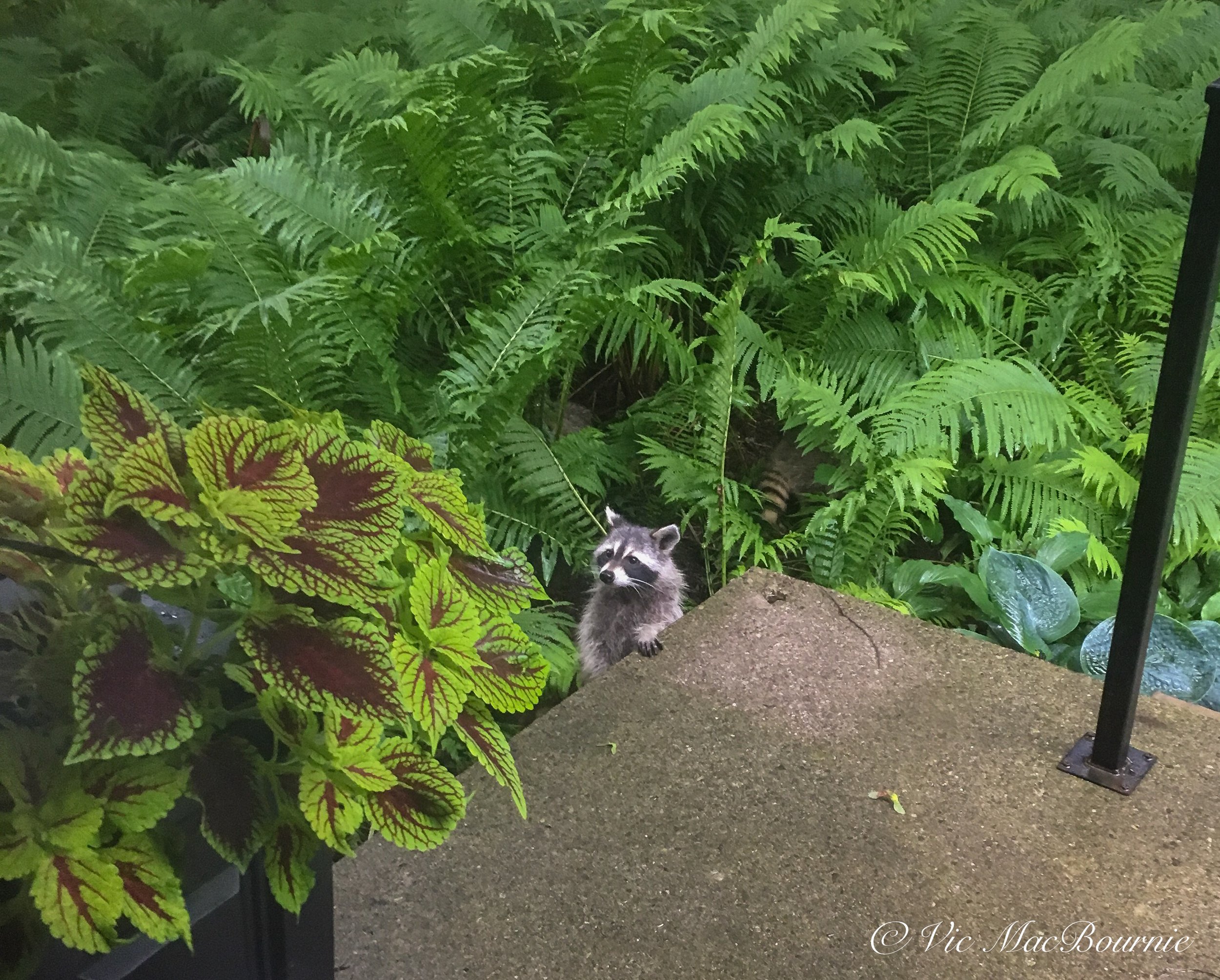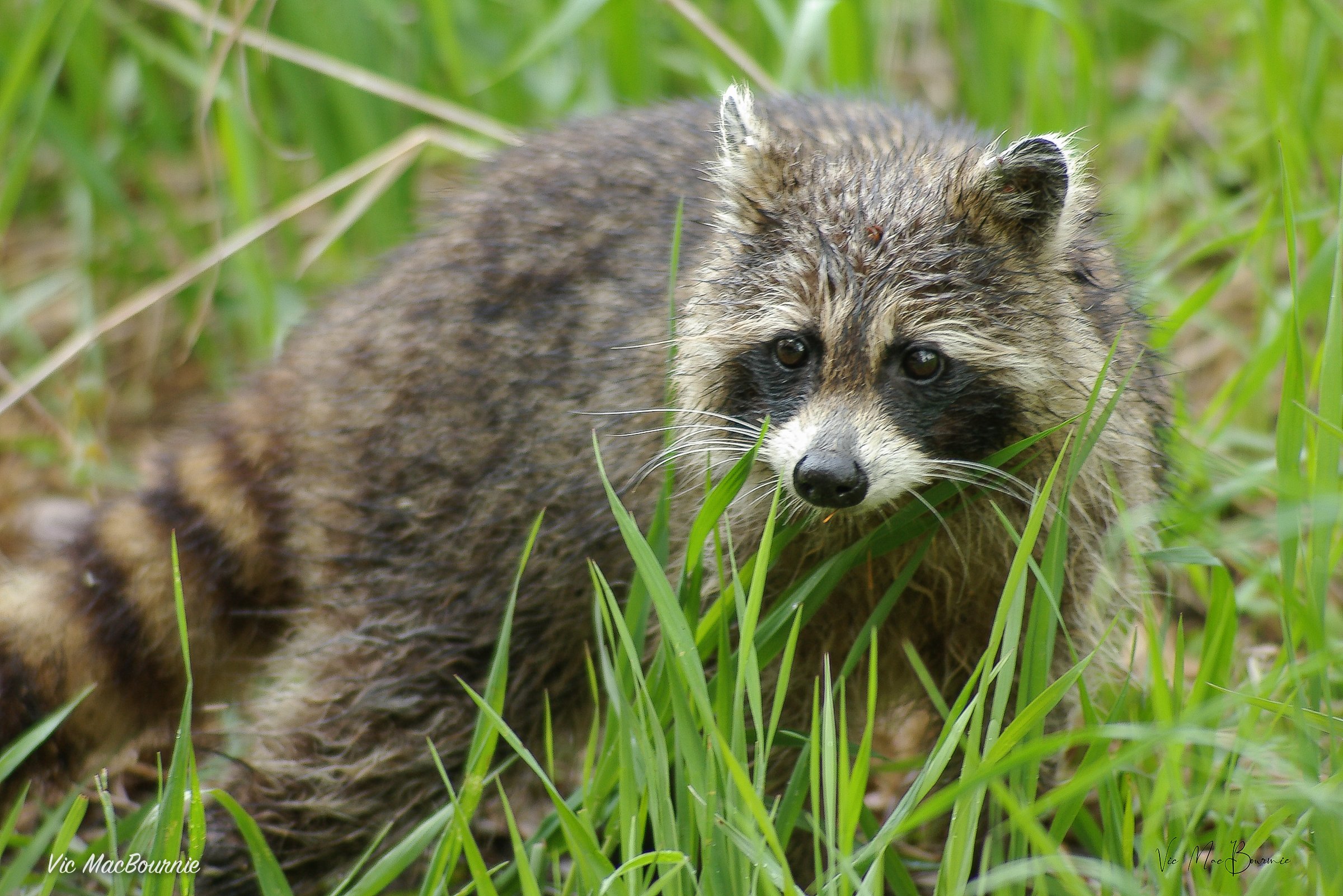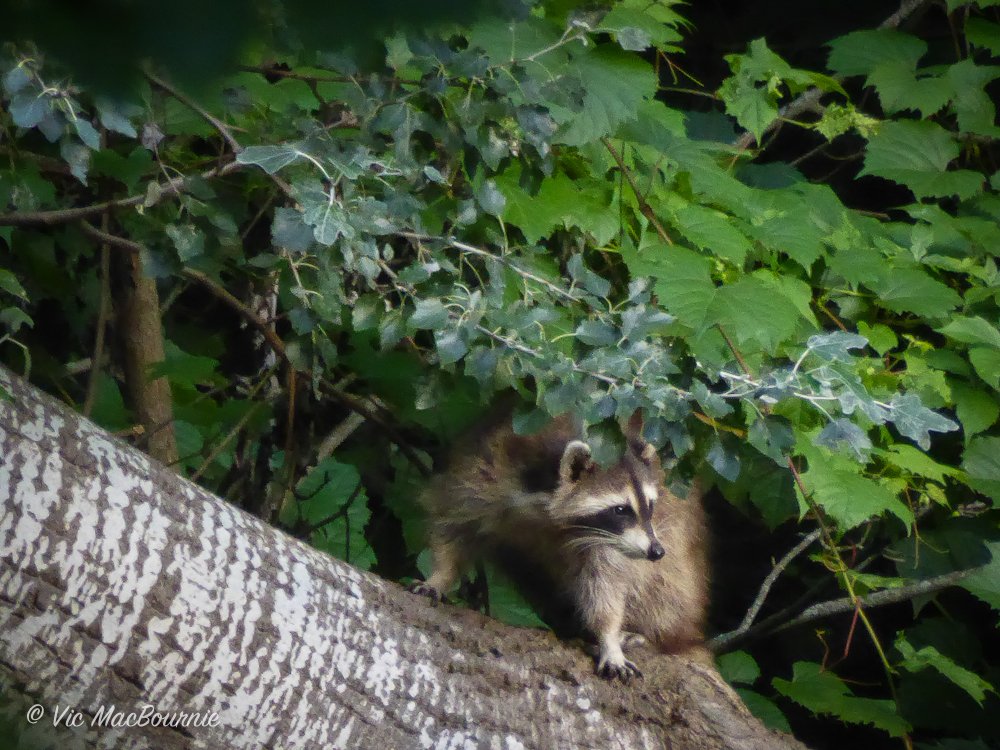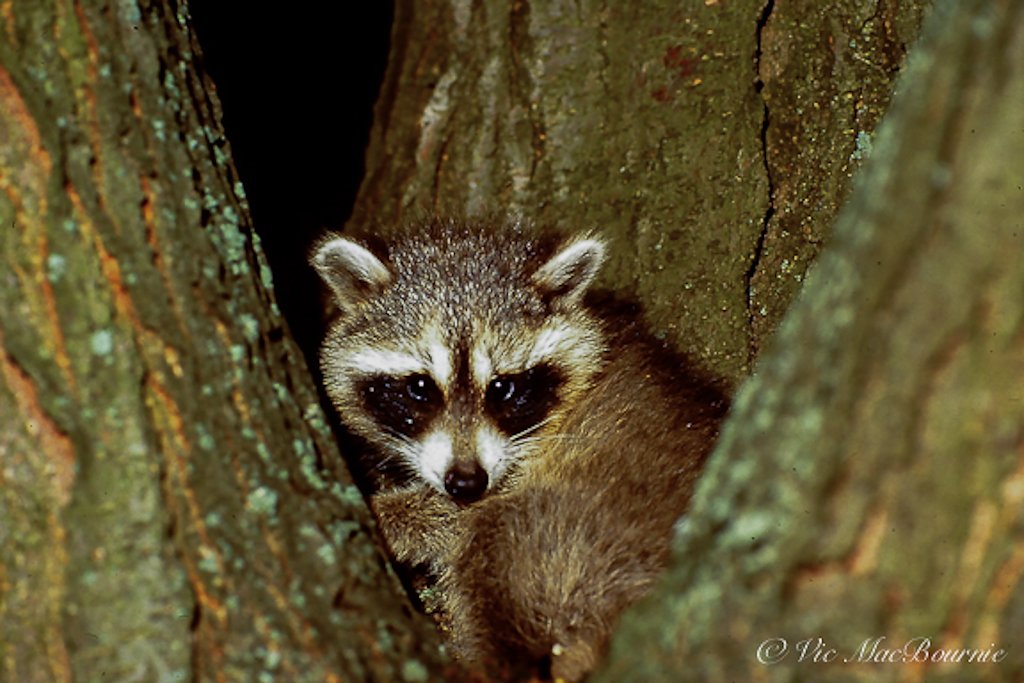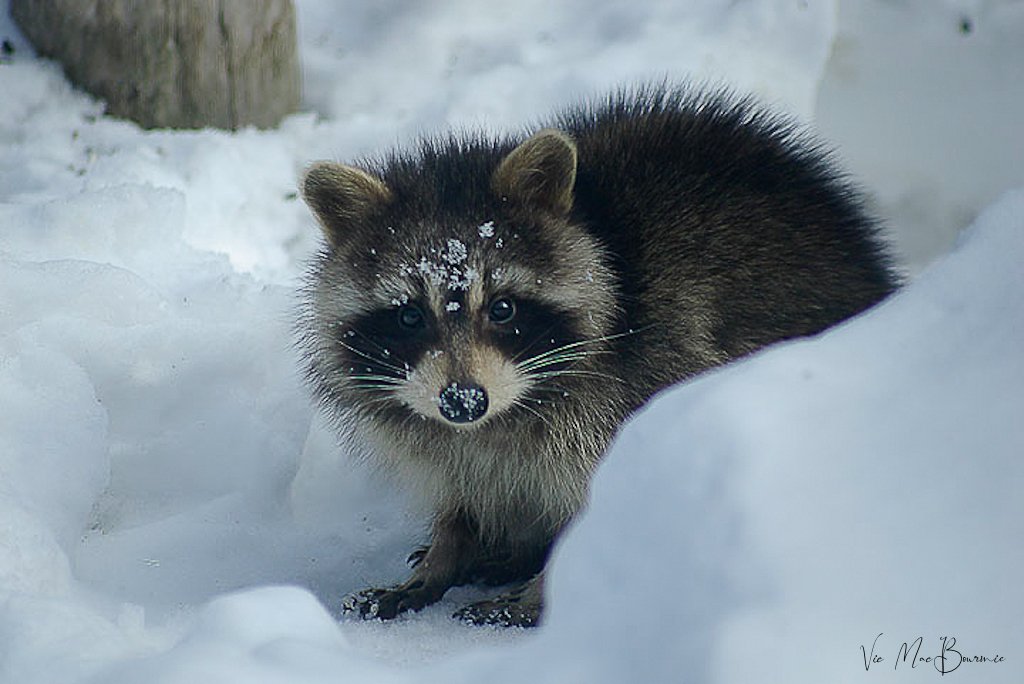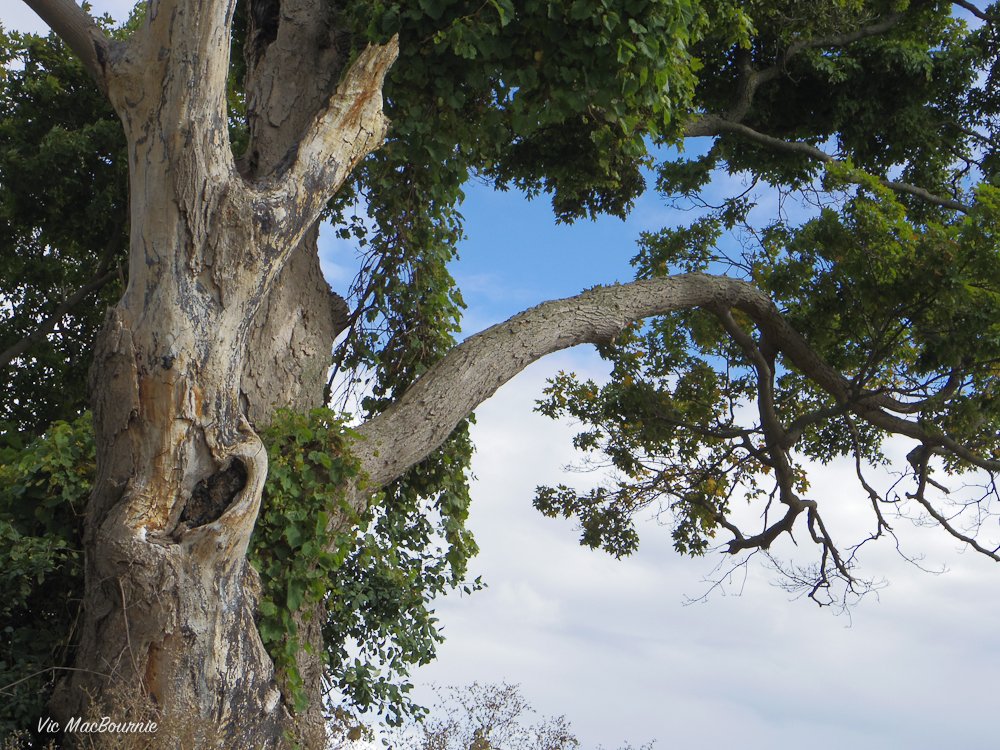Are raccoons good for the garden?
Take steps to discourage over population of raccoons
A quick search on the internet and you would think Raccoons are the devil incarnate when, in fact, they can be welcome visitors to our gardens much like foxes, coyotes and other animals that share our garden spaces with us.
The problem is not raccoons, the problem – not unlike so many in our gardens – is too many raccoons. That’s especially true in smaller urban and inner-city backyards where they can quickly become overpopulated, get into trouble and too easily invade our living spaces.
If you’ve had a family of raccoons living in the attic or taking over your shed, you may not be quick to welcome them back.
Can raccoons be beneficial in a garden?
But did you know that, despite the mischief they seem to get into regularly, these cute little critters are one link to ensuring healthy landscapes?
These masked bandits can play an important role in garden pest control as well as seed distribution throughout the garden.
(Read on for more details on how raccoons can be beneficial in the garden.)
While raccoons in small numbers can be good for a garden, they can pose dangers if they get into your home and live in the attic or chimney. (More details on the dangers of the raccoon at the end of the post.)
But first, back to the problem of when the numbers get out of hand and there are too many raccoons in a given area.
This ballooning population is often the result of either a lack of predators and/or too many resources that allow for a disproportionate number of raccoons to survive comfortably in a given area.
In the wild, raccoon density is usually about 5-10 per square kilometre. In urban areas that number can climb to as many as 100 raccoons per square kilometre. And, where the situation is particularly out of hand, those numbers can get up even higher.
Obviously, predators can play a major role in keeping the population down. The problem is that raccoons are fierce little mammals and have few predators in the wild let alone inner cities.
A raccon’s main predators include mountain lions, bobcats, coyotes, foxes, dogs, wolves, Great Horned Owls, and fishers. Besides coyotes, foxes, dogs and maybe Great Horned owls, few of these top predators are found in urban areas and even fewer are found in inner-city cores. Here, traffic easily accounts for the highest death rates in raccoons.
Even traffic, however, can’t stop these little critters. Studies have shown that in urban areas, part of a mother raccoon’s training for her babies is learning to cross the road quickly leading to a reduction in road kills.
In our woodland garden we benefit from the existence of foxes, coyotes and birds of prey including owls that I suspect keep raccoon numbers manageable.
In fact, I rarely see raccoons in our garden even at night. When I do see them, they are almost always under the bird feeder, which I ensure has very little if any feed remaining on the ground as evening approaches.
A high quality, no-mess bird food and a catch tray to keep seed off the ground goes a long way in keeping the ground around the feeders free of bird seed.
Despite problems with raccoons, there are good reasons to admire them and welcome them into your environment.
Do’s and don’ts to create a healthy environment for raccoons
Do not leave cat or dog food out at any time. Feed your domesticated animals inside your home. If you must feed them outside, be sure to bring in the dishes or ensure there is no food remaining at night.
Do leave old dead trees (snags) remaining in your garden. Cut off branches that might pose a threat to humans, but leave the main trunk (or at least part of it) for habitat. You might be surprised what you attract, including a family of owls.
Do not leave access points uncovered in your home or shed where raccoons could gain access to your attic or chimney.
Do leave a large brush pile in a corner of the yard where raccoons can forage for food or even possibly burrow in for the winter.
Do not use poisons in the yard to kill small mammals or insects that could be prey for raccoons.
Do grow a variety of berry, fruit and nut bearing shrubs and trees to provide raccoons and other wildlife with a natural food source.
Do not trap raccoons and move them far away into a forest or another part of town.
Do provide a water source for them. If there is one thing raccoons need, it is a source of water. Originally raccoons were found in the tropics where they could be found foraging along riverbanks. Today, a small pond or patio container of water is enough to satisfy their needs.
Do not allow bird seed to pile up under your feeders. Use a high quality seed and catch trays to keep the ground under feeders free of large quantities of seed.
Raccoons are excellent at pest control
Did you know that raccoons are excellent at pest control – both insects, small mammals and reptiles – not only eliminating problems but cleaning up any remains. For this reason, it’s important not to use pesticides in the garden for fear of poisoning the very animals that are tasked with the job of keeping the garden free of certain pests.
What do raccoons eat in their natural environment?
Much of the success of raccoons is based on the fact they are omnivores – meaning they will eat, similar to humans, just about anything.
In fact, a typical diet of a raccoon in a natural environment is made up of about 40 per cent invertebrates (including everything from insects to crustaceans like crayfish that live in fresh-water streams), 30 per cent plant material, and another 30 per cent vertebrates (such as small mammals including mice, birds and reptiles.)
Young Raccoons (called kits or cubs) have a range of sounds
Young raccoons chitter to call their mom, or when they are interacting with one another
Raccoons also purr much like a cat when they feel happy and safe, often when they are in the den with their mother
They will bark and growl quite viciously when they feel they are in extreme danger
Young raccoons will actually scream if they feel extremely frightened
As they get older, they make more of a chattering sound to communicate with family members
Adult raccoons will snarl and growl loudly when they are protecting their young or a food source.
Where do raccoons live in natural environments?
Raccoons inhabit a wide range of environments including forests, shrublands and grasslands. They are even known to keep up to 20 denning areas at one time.
These masked bandits are sometimes categorized as “little bears” because they are closer to the bear family than the cat family.
Racoons are members of the Procyonidae family. Wikipedia classifies it as a “New World family of the order Carnivora.” This group includes our North and Central American-based raccoons. Just for a little perspective, members of the Procynonidae family also include ringtails, cacomistles, coatis, kinkajous, olingos, and olinguitos.
How did raccoons migrate so far north?
Raccoons are originally from warm climates but have used trains, and trucks to migrate north where they found barns and sheds to aid their northern migration and escape cold winters. Now, raccoons have been found as far north as Alaska.
Why is Toronto called the raccoon capital of the world?
Racoons are common in the United States and most parts of Canada, especially in large cities like New York, Chicago and, in Canada, Toronto, which has become known as the raccoon capital of the world. Estimates show that there are 50 times more raccoons living in Toronto than in the adjacent countryside. This has helped to earn them the reputation as the raccoon capital of the world.
Raccoons are extremely adaptable animals thriving in natural, rural woodland areas as well as in heavily urban areas.
Are country and city raccoons different?
Studies have even shown that country and city raccoons have adapted into two very different creatures. There are the shy reclusive raccoons that make their homes in the country, and bold city raccoons that are right at home sharing backyards with human neighbours. Some studies have shown that they are quick learners and this enables them to be so successful in very urban areas.
Are raccoons smart?
Some would call raccoons the quintessential generalists that are able to live in a whole variety of habitats. Part of their success stems from the fact that they are smart animals able to adapt to a range of environments and habitats. They are also able to figure out basic puzzles and obstacles through persistence and brain power.
Raccoons see urban areas as opportunities rich in resources including both food and habitat. They are particularly successful in exploiting their surroundings and more than able to move into buildings where there are structural defects that allow easy access.
One of the important features that help these animals be so successful in an urban environment is the dexterity of their “fingers.” These long slender fingers are particularly sensitive to touch and allows raccoons to manipulate both food and complicated devices to the point where they can easily open garbage cans and doors (even those fitted with locking devices).
Do raccoons come out during the day?
They are primarily nocturnal, however, don’t be surprised to see them up and about during daylight hours especially in fall – much like bears – when they are looking to increase reserves in preparation for winter.
Do raccoons hibernate during winter?
You might wonder why you rarely see raccoons during winter. Are they hibernating? Technically, raccoons are not true hibernators although, like bears, they store body fat throughout the summer and into fall so they can sleep through the coldest part of winters, especially in colder environments in the United States and into Canada.
Raccoons actually go into a state of torpor during winter where they sleep for extended periods to reduce the amount of energy needed, but at the same time are aware of changing conditions including threats from predators.
Where do raccoons live in nature?
In natural rural areas, raccoons set up dens primarily in hollow trees but have even been known to take over smaller animals’ underground burrows where they spend the winter tucked away with family members to stay warm. In urban environments, where hollow trees (or snags) are immediately removed by most homeowners, attics, sheds and chimneys are substituted for the comfort of hollow trees.
Since raccoons are less active during the winter, you may not even know they are living with you in the home’s attic until they begin moving around in spring.
Let’s get back to the benefits of these little masked bandits.
Besides pest management, what other benefits do raccoons have in our gardens?
Since raccoons are voracious eaters of seeds, berries and fruit, they play an important role in seed distribution both in the wild and in our gardens. Many seeds require a certain type of stratification which can be achieved by going through the digestive system of racoons and other mammals. One look at their feces in fall and you’ll see quite clearly that they are working hard at this important job.
Is raccoon poop/feces dangerous?
You may ask that besides a bite from a raccoon, what other dangers can a raccoon pose to humans?
Any animal feces can be dangerous in the garden, but it should be noted that a raccoon can carry a particularly dangerous strain of roundworm in their feces. It is particularly dangerous if ingested, but this is not uncommon if you have toddlers around or pets. The real danger are the eggs of roundworm that are in the feces. They can spread to the soil around the feces and survive for extended periods of time in the soil.
In addition to raccoon roundworm, raccoons can pose dangers to our pets including canine distemper, Leptospirosis, parvovirus, mange, fleas and rabies.
How dangerous is raccoon roundworm?
Raccoon roundworm should not be put in the same category as other roundworms because it is a much more serious problem for humans. Dogs can carry raccoon roundworms and be a spreader of the illnesses associated with it.
Roundworms come from eggs in raccoon feces and if left untreated in humans, these eggs can hatch and worms can spread to our brains resulting in serious neurological problems leading to loss of coordination, seizures, coma and eventually possible death. The worms can also travel into your eyes causing vision impairment and eventual blindness.
Roundworm contraction is most often found in children who play in soil or sand outside where raccoon feces is present. It can also be contracted by people in close contact with raccoon feces like if the animals are living in your attic and you try to extricate them on your own without experts.
If you think you or your children may have been exposed, contact your doctor immediately to obtain a deworming medication.
Can you trap a raccoon and bring it out to a forest?
The answer, in most cases, is no you cannot live trap a raccoon and move it to the forest.
There are two reasons why this practise is unacceptable.
First, it is too easy to separate a mother from her kits when they are vulnerable and cannot survive on their own.
More importantly, however, is the potential to spread rabies and other diseases. Governments restrict the movement of wildlife through human intervention if there is a chance that the animals may have rabies. This practise helps to limit the spread of rabies.
How to get raccoons out of your attic
The more acceptable way to rid an attic of raccoons is to hire a wildlife company that will chase the adults out of the house and then screen off any access points back into the attic. Once that is completed, any raccoon kits that are left in the attic are removed and put into a special reunion box and left nearby for mom to find. The mother raccoon will quickly find her babies and relocate them to another den in the area.
Are raccoons aggressive?
Raccoons are not generally aggressive animals unless they feel threatened or are sick or injured. Absolutely raccoons can be aggressive if they feel threatened or are cornered. They come equipped with sharp teeth and know how to use them if necessary. But they are not dangerous in a normal garden setting where they do not feel threatened. Just make sure they know you are around and it is unlikely that they will stick around.
If a raccoon is aggressive, contact your local animal control because it could be injured or be carrying rabies.
Never corner a raccoon, say in a garage or shed. Instead, open the door and let them leave on their own. Better to make the environment they are in less attractive for them so they leave on their own.
For all kinds of reasons, keep your dogs and other pets away from raccoons if possible. It is however, not unheard of that raccoons can befriend family pets and live in harmony, but better not to encourage that behaviour.

